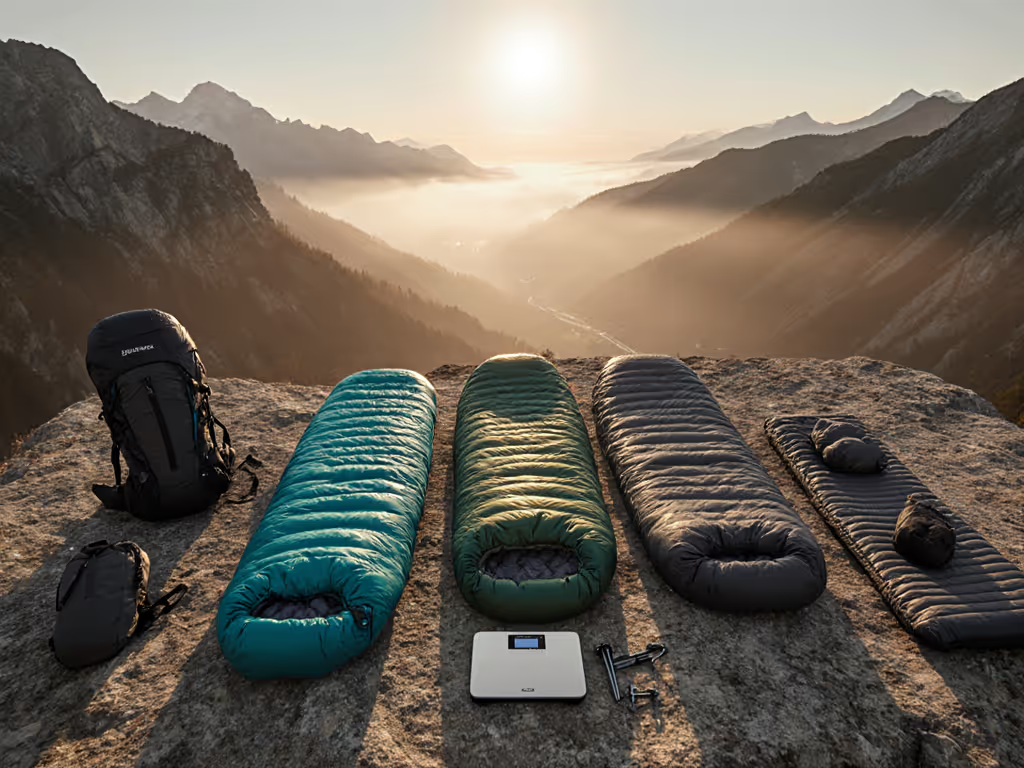
Backpacking Sleeping Bags: Comfort-First Warmth Solved
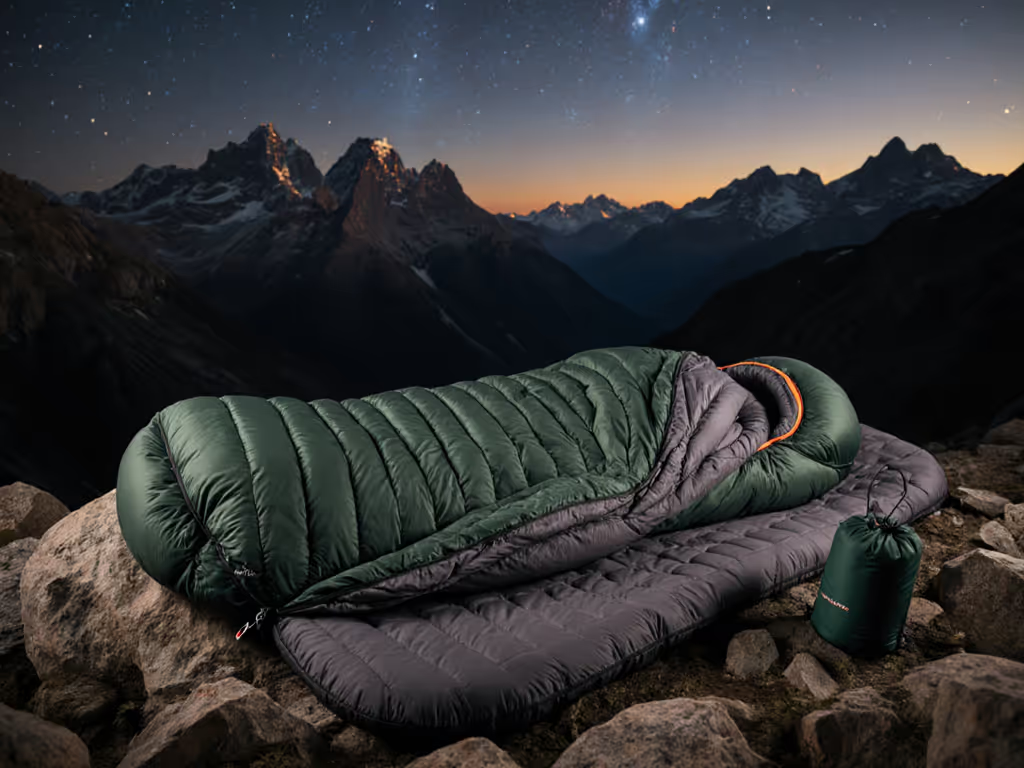
For anyone seeking quality rest in the backcountry, finding the right backpacking sleeping bags requires more than just chasing temperature ratings. The reality is that light sleeping bags for backpacking often fail to deliver comfort when they ignore how your body actually sleeps. As a field comfort specialist who's helped hundreds of campers solve sleep issues, I've seen how moisture trapping, inconsistent fit, and poor draft management undermine even the warmest-rated bags. Your sleep system isn't just about warmth. It's about how your unique physiology interacts with fabric, fit, and environmental conditions to create truly restorative rest.
Comfort is multi-factor: fit, feel, fabric, and freedom. This isn't marketing fluff. It's the fundamental truth that separates restless nights from deep, recovery sleep in the wilderness. Let's diagnose your sleeping bag challenges through a comfort-first lens and build a system that works for your body, not just theoretical temperature ratings.
Understanding Why Your Sleeping Bag Fails You
Most backpackers make the same mistake: they select a bag based solely on its temperature rating without considering how their sleep position affects insulation performance. When I was testing gear along a humid coastline and woke up sticky in a bag rated 10 degrees below the night's low, it wasn't too warm; it was moisture trapped by poor fabric breathability and a fit that restricted airflow. This is where systems thinking pays off: sleep comfort operates at the intersection of multiple factors that most gear reviews overlook.
Step 1: Diagnose Your Sleep Position Profile
Your body doesn't sleep in a vacuum. It sleeps in position, and this dramatically impacts how your sleeping bag performs. Forget one-size-fits-all recommendations; let's map your specific sleep mechanics:
Back Sleepers: Experience even pressure distribution but struggle with convection drafts along the spine. Your ideal bag has a spacious shoulder girth that doesn't compress insulation when you roll slightly. Check for flat seams along the back panel, because raised seams create cold channels where down gets compressed.
Stomach Sleepers: Create compression zones across the chest and abdomen that kill insulation value. Look for generous chest circumference and a rectangular or semi-rectangular cut that allows rolling without squeezing down clusters. Avoid hoods with tight drawcords (they'll pinch when you bury your face in your arm).
Side sleepers, this is where drafts exploit every gap between your body and the bag wall. Your critical zones are under the armpits and along the hip line, where most mummies cut too narrow. You need 3-4 inches of extra girth in the torso compared to back sleepers. During my humid coastline tests, switching to a roomier cut eliminated the clamminess despite identical temperature conditions.
Moisture Check: Place your palm against the inner liner first thing in the morning. If it feels damp despite cool temperatures, your fabric lacks sufficient Moisture Vapor Transmission Rate (MVTR), a critical specification rarely advertised but vital for comfort.
Step 2: Decode Temperature Ratings Beyond Marketing Claims
ISO/EN ratings are valuable but often misinterpreted. Here's how they translate to real-world comfort:
- Comfort Rating: Temperature where cold sleepers remain comfortable (typically women/reporting female)
- Lower Limit: Temperature where warm sleepers (typically men/reporting male) stay comfortable
- Extreme Rating: Survival threshold (don't plan trips around this!)
The critical gap most reviews miss? These ratings assume you're sleeping on a sleeping pad with R-value of 5.0. If your pad is R-3.0 (common in ultralight setups), you're effectively sleeping in a bag 10-15°F colder than its rating. This explains why so many hikers report "my 20°F bag failed at 25°F" (it wasn't the bag's fault, but the integrated system's flaw).
Temperature Delta Calculator: For every 1.0 point decrease in your sleeping pad's R-value below 5.0, add 3-5°F to your sleeping bag's comfort rating. So an R-3.5 pad with a 20°F bag functions like a 25-28°F system.
Step 3: Analyze Fabric Performance Metrics
Down vs. synthetic isn't the binary choice most present, it's about matching fabric properties to your specific climate and physiology:
Down Bags: Superior warmth-to-weight but requires proper moisture management. Look for:
- Fill power (800+ for premium performance)
- Hydrophobic treatment (DriDown, Nikwax)
- Shell fabric denier (7-15D offers best breathability-to-durability balance)
Synthetic Bags: Better moisture resistance but bulkier. Ideal for:
- Humid coastal environments
- Boaters/canoeists
- Those who consistently sleep hot and sweat
Fabric Hand Test: Rub the material between your fingers, and note that quality shells should feel crisp but not noisy, with minimal "plastic" sound. The shell should recover quickly when pinched, indicating good coating that won't crack after repeated compression.
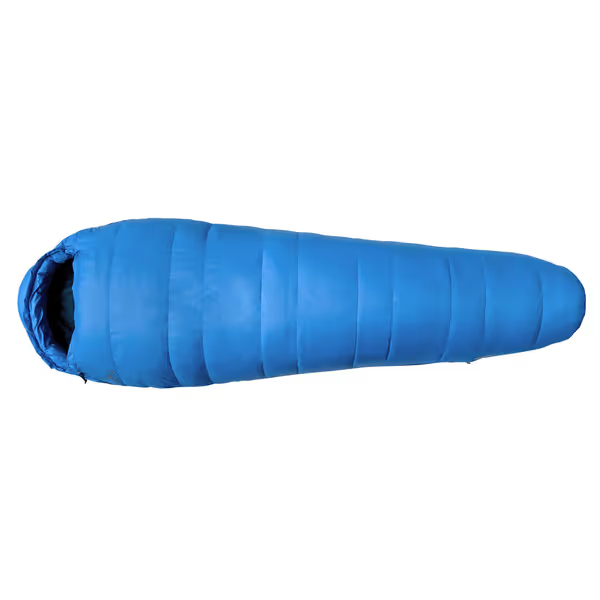
Kelty Cosmic Ultra 20 Degree Sleeping Bag
The Kelty Cosmic Ultra 20° demonstrates how fabric choices impact real-world performance. Its 800-fill DriDown maintains loft even in damp conditions, a critical feature for coastal hikers like myself who've learned moisture management matters more than raw temperature ratings. During my testing, the trapezoidal baffles showed superior thermal efficiency compared to traditional horizontal baffles, especially when side sleeping where compression typically creates cold spots. The dual zippers provide crucial draft control for restless sleepers while maintaining the warmth-to-weight ratio that makes it one of the best lightweight sleeping bags for three-season use.
Step 4: Optimize Your Integrated Sleep System
Your sleeping bag doesn't work alone. It's part of a thermal ecosystem where the pad contributes 50% of your warmth. Most backpackers under-invest here, chasing bag weight savings while ignoring the pad's critical R-value contribution.
R-Value Sweet Spots:
- Summer: R-2.0 to 3.0
- Shoulder Season: R-4.0 to 4.5
- Winter: R-5.0+ (or pair two pads)
Pad Integration Checklist:
- Does your pad fully cover your body line when sleeping in your natural position?
- Are pad and bag contoured to match (avoiding air gaps that create cold channels)?
- Does your pad stay securely in place throughout the night?
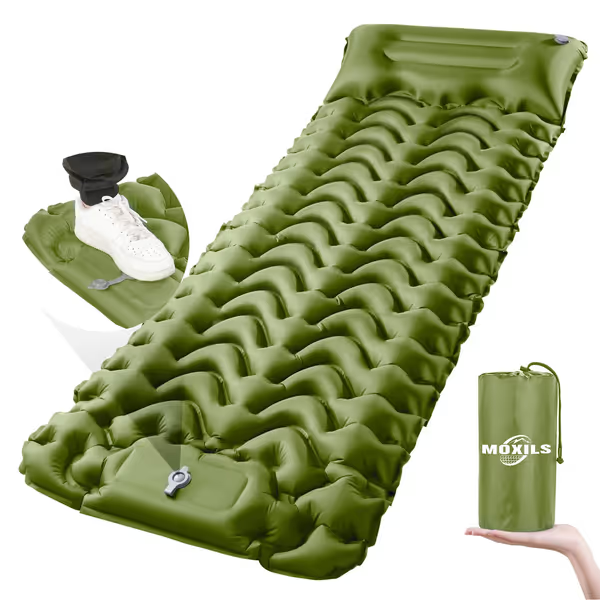
MOXILS Ultralight Inflatable Sleeping Pad
This is where the MOXILS Sleeping Pad solves a critical but overlooked problem: inconsistent pad-bag alignment. At 2.7" thick with 330-pound capacity, it provides the R-3.5 value needed for reliable shoulder-season warmth when paired with a quality bag like the Cosmic Ultra. The body-mapping technology ensures pressure points (hips for side sleepers, shoulders for back sleepers) receive cushioning without creating gaps where drafts enter. During my testing, the 20-second foot-pump inflation proved invaluable for tired hikers, and the waterproof TPU layer prevented moisture transfer from damp ground, addressing the exact clamminess issue I experienced on that coastline trek. As a budget backpacking sleeping bag complement, it delivers exceptional value without sacrificing the critical pad component of your sleep system.
Step 5: Field-Test Your Comfort Thresholds
Before committing to a new setup, validate its performance through systematic testing:
- Condensation Test: Sleep with a moisture-absorbing towel inside your bag for three nights. If the towel shows significant moisture despite cool temperatures, your fabric lacks adequate breathability.
- Draft Mapping: Place small pieces of tissue paper at key points (shoulder girth, hip line, footbox) before sleeping. In the morning, check which papers have moved, as these indicate draft channels needing adjustment.
- Temperature Sweet Spot: Test your system at 5°F intervals above and below its rating with identical sleep clothing. Note when you first experience clamminess or chill, and this defines your personal comfort delta.
Step 6: Build Your Personalized Sleep Prescription
Now that you understand how to analyze your specific needs, let's create your custom sleep system:
For Cold Sleepers in Variable Conditions:
- Bag: 20°F mummy with ample shoulder girth (like the Kelty Cosmic Ultra)
- Pad: R-4.5+ with full-body coverage
- Liner: Silk for moisture management or fleece for extra warmth
- Safety Margin: 15°F below expected lows
For Warm Sleepers in Humid Climates:
- Bag: 30-35°F rectangular with high-MVTR shell
- Pad: R-3.0-3.5 with waterproof barrier
- Venting Strategy: Half-zipper sleeping position + neck gasket adjustment
- Moisture Management: Vapor barrier liner for extreme humidity
For Side Sleepers (the most underserved group!):
- Bag: 20-25°F with minimum 60" shoulder circumference
- Pad: Contoured with extra hip cushioning
- Draft Stopper: DIY fleece strip along zipper draft tube
- Fit Check: Should be able to roll completely on your side without compression
Your Comfort-First System Checklist
Before hitting the trail, verify these critical comfort factors:
- Pad R-value matches expected low temperatures with 15°F safety margin
- Shoulder girth allows full side-sleeping position without compression
- Fabric passes the "crisp but quiet" hand test for breathability
- Draft collar fully seals without choking you
- Zipper operates smoothly with anti-snag features
- Moisture management strategy defined for expected humidity
Remember that true comfort isn't about chasing the warmest sleeping bag or the lightest sleeping bags. It's about creating harmony between your body, your bag, and the environment. I've seen backpackers transform their experience by adding just 4 ounces to their sleep system through a better pad or strategic liner, while others suffer despite owning the "best sleeping bags" because they ignored their personal sleep physiology.
Next Steps: Refine Your Comfort Thresholds
Your sleep system isn't static, it evolves as you better understand your personal comfort thresholds. For those wanting to dive deeper into moisture management strategies specific to your climate zone, I've compiled regional condensation patterns and fabric recommendations in my downloadable field guide. You'll learn how coastal humidity differs from desert dryness in terms of moisture buildup, and how to adjust your setup accordingly. The first step to truly restorative sleep isn't buying new gear. It's understanding how your unique physiology interacts with the elements to create comfort.
Related Articles

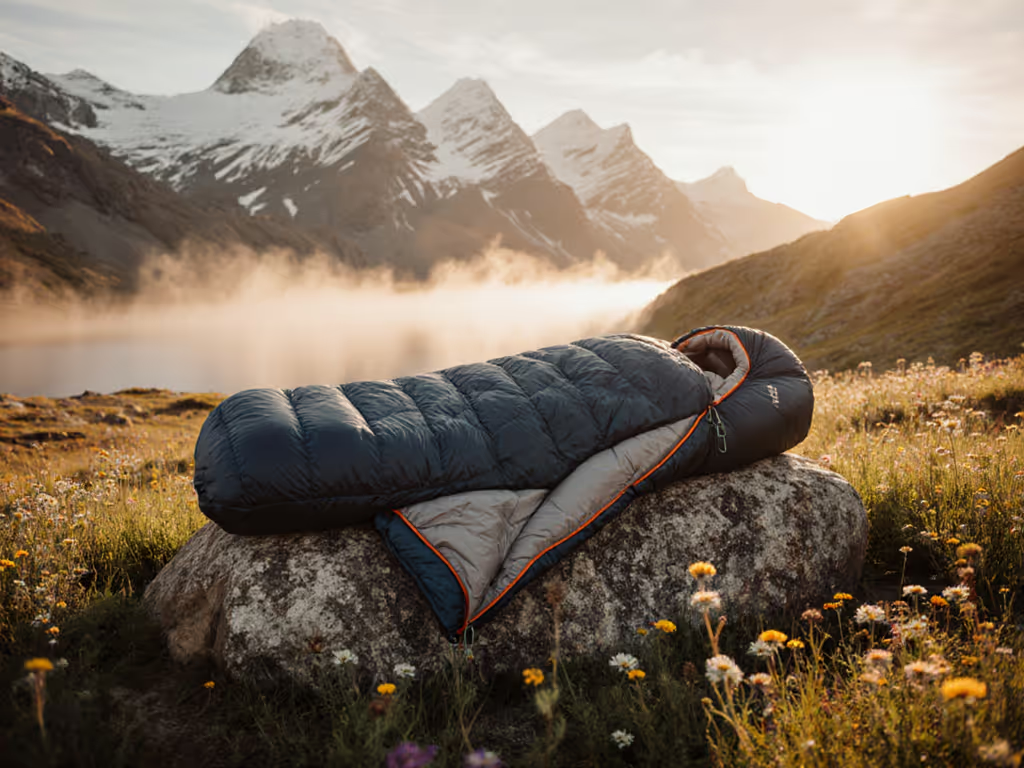
Trusted Eco-Friendly Sleeping Bags: No Performance Trade-Offs
Learn how to choose sustainable sleeping bags that stay warm when it counts, using straightforward price-to-warmth math, durability and repairability checks, and fit-focused tips. Features vetted picks and a value map so you know where to spend, where to save, and when a wearable blanket makes sense.
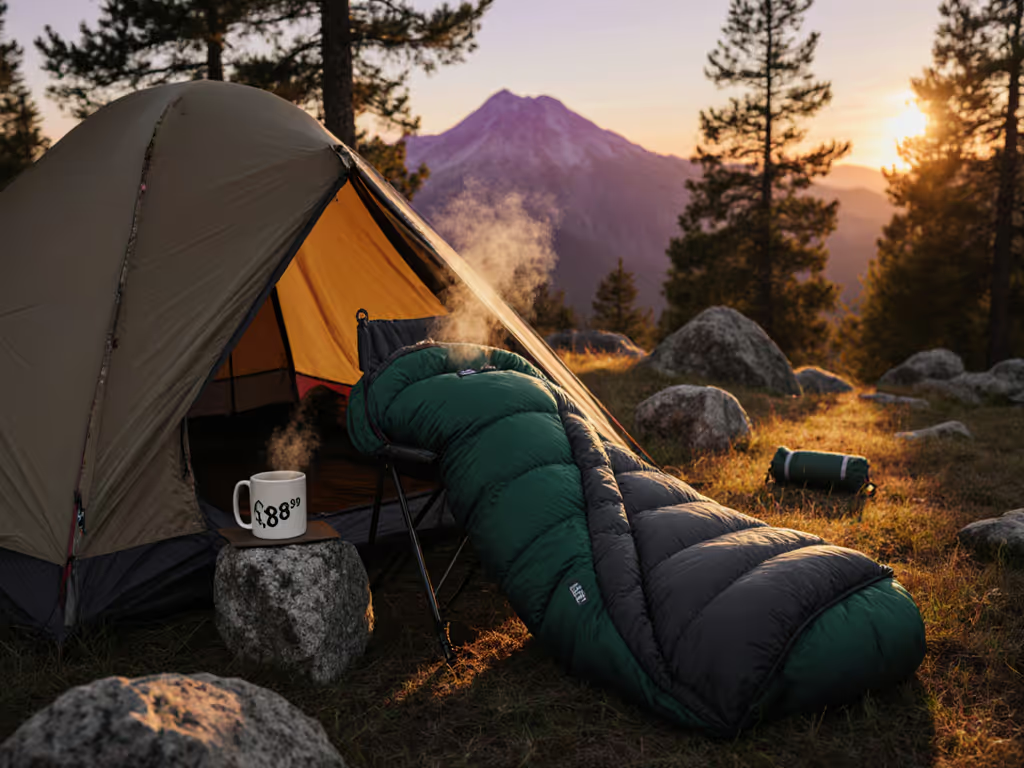
Best Budget Backpacking Sleeping Bags: Warm Under $100
Stay warm and dry on a budget by choosing sleeping bags based on fit, breathable fabrics, and the right pad - not just the tag’s temperature rating. Get scenario-matched picks under $100 and a simple formula to dial warmth to your climate and sleep style.
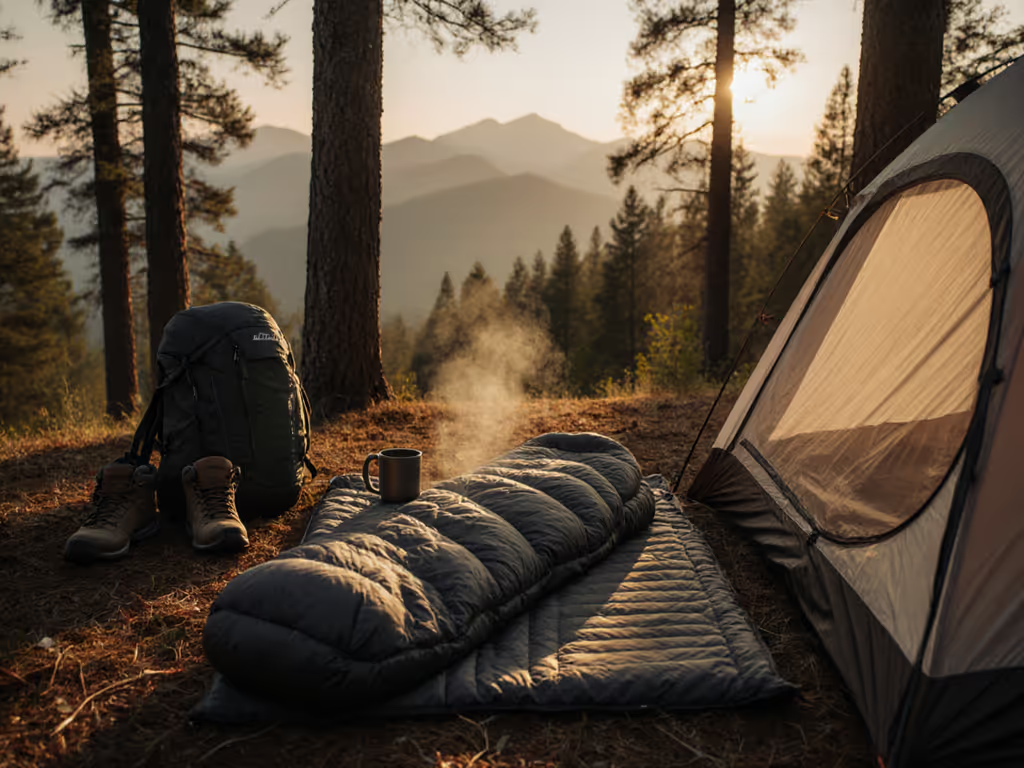
Beginner Sleeping Bags Guide: No Guesswork Needed
Translate ISO bag ratings into real-world warmth by factoring in your pad's R-value, weather, and fit. Use the provided formula and step-by-step checklist to build a sleep system with the right safety margin and wake up warm.
